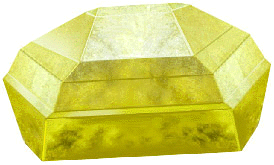...Best of Sicily presents... Best of Sicily Magazine. ... Dedicated to Sicilian art, culture, history, people, places and all things Sicilian. |
by Vincenzo Mormino | ||
Magazine Index Best of Sicily Arts & Culture Fashion Food & Wine History & Society About Us Travel Faqs Contact Map of Sicily |
In Sicily, most sulfur is found in sedimentary deposits and a traditional extraction method is igniting the ore. There are few active sulfur mines in Sicily today because it is more economical to rely on sources in the Americas and Asia. The powder and brilliant yellow crystals were precious to industry. Extracting sulfur from various compounds was not always an easy task, but the real challenge was the mining itself, incredibly difficult with the technology available in the nineteenth century. The mines were nightmarish environments. Surface-based strip mining was sometimes effective, but more often deep --and dangerous-- tunnels were the only efficient means of extracting the precious ores. Too often, children were pressed into service in a form of slave labor. Until the middle of the twentieth century, most of Sicily's larger estates were still owned by the aristocracy (nobles and gentry) or the Church (typically monasteries). The economy was primarily agricultural, and farming methods were, at best, primitive. Compared to agriculture, mining was an expensive process. Historically, smaller parcels of land were held by common farmers or free towns, but only the more powerful landholding institutions had the resources to exploit the vast territories and the profitable sulfur economy. People, as well as the minerals themselves, were exploited for the gain of a few, and it was only in the 1890s, through the efforts of social activists such as Luigi Sturzo (a Catholic priest), that the issues of the inhumane working conditions and child exploitation were addressed, first by the Catholic Church and then by the reactionary (and often repressive) government of the Kingdom of Italy. Salt mining practices were also addressed. It's difficult to imagine how the Sicilian economy would have fared without sulfur, which pumped at least some needed revenue into a failing economy. By 1900, mediocre agricultural policies and reckless exploitation had rendered food production inefficient and barely able to sustain the island's growing population. The fiscal politics of the regime that took over in 1860 eventually made emigration popular in regions such as Sicily and Calabria. (Until about 1870, it was usually northern Italians, not southerners, who fled Italy for economic reasons.) Understandably, historians regard the sulfur mining industry as a sad chapter in the history of Sicily, and as something which further deteriorated the ecosystem of the largely deforested central Sicilian provinces. In the broader context, sulfur was a factor that preserved Sicily's political prominence in an age of global military and industrial power. About the Author: Vincenzo Mormino has written about scientific topics, wildlife and nature for Best of Sicily and hard-copy publications. | |
Top of Page |
 Sulfur (or sulphur, from the Sanskrit sulvere) is one of the most common elements on Earth, and one of the most important. Until around 1900 Sicily was the world's primary commercial source of sulfur-bearing compounds, and dozens of mines dotted the island, particularly in the provinces of Enna, Agrigento, Caltanissetta and Siracusa. What was formerly called brimstone (and thought to feed the perpetual fires of Hell) was known to the ancients, who used it in smelting copper and making bronze. Sulfur is a yellow, non-metallic element whose crystalline form melts at 116 degrees Celsius (241 F). It's symbol in the Periodic Table is a simple "S" and sulfur was formally identified as an element only in the 1770s based on the work of Antoine Lavoisier. Sulfur was discovered in Sicily at an early date, and there is evidence to suggest that the island's native peoples (Sicanians, Sicels, Elymians) exported it to Greece and northern Africa as early as circa 900 BC (BCE). Sulfur has hundreds of uses today, but it was the Industrial Revolution, and the ever greater need for gunpowder, that spurred the growth of sulfur mining in Sicily in the late 1700s. Indeed, the British and French interest in Sicily was rooted in the presence of sulfur here. By 1800, Sicily had a virtual monopoly on the western world's sulfur supply, and the British purchased most of it through exclusive contracts.
Sulfur (or sulphur, from the Sanskrit sulvere) is one of the most common elements on Earth, and one of the most important. Until around 1900 Sicily was the world's primary commercial source of sulfur-bearing compounds, and dozens of mines dotted the island, particularly in the provinces of Enna, Agrigento, Caltanissetta and Siracusa. What was formerly called brimstone (and thought to feed the perpetual fires of Hell) was known to the ancients, who used it in smelting copper and making bronze. Sulfur is a yellow, non-metallic element whose crystalline form melts at 116 degrees Celsius (241 F). It's symbol in the Periodic Table is a simple "S" and sulfur was formally identified as an element only in the 1770s based on the work of Antoine Lavoisier. Sulfur was discovered in Sicily at an early date, and there is evidence to suggest that the island's native peoples (Sicanians, Sicels, Elymians) exported it to Greece and northern Africa as early as circa 900 BC (BCE). Sulfur has hundreds of uses today, but it was the Industrial Revolution, and the ever greater need for gunpowder, that spurred the growth of sulfur mining in Sicily in the late 1700s. Indeed, the British and French interest in Sicily was rooted in the presence of sulfur here. By 1800, Sicily had a virtual monopoly on the western world's sulfur supply, and the British purchased most of it through exclusive contracts.